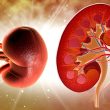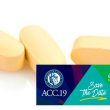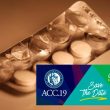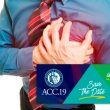1- What to Do with Blood Pressure Levels Between 130/80 and 139/89 mmHg The decision to be made with a treatment-free patient with systolic blood pressure over 160 mmHg or diastolic blood pressure over 100 mmHg is an easy one. All guidelines agree: treatment should be started immediately alongside lifestyle changes. Read more 2-<a href="https://solaci.org/en/2019/04/22/the-most-read-articles-of-march-in-interventional-cardiology/" title="Read more" >...</a>
Kidney Insufficiency and the Risk of Developing Aortic Stenosis in the Future
Chronic kidney disease, even in moderate or severe stages before dialysis, is associated with an increased risk of aortic stenosis according to this work recently published in J Am Coll Cardiol. Both share several risk factors, something that complicates the identification of the association between these diseases due to multiple confounding variables. The study<a href="https://solaci.org/en/2019/04/16/kidney-insufficiency-and-the-risk-of-developing-aortic-stenosis-in-the-future/" title="Read more" >...</a>
Modern Valves Reduce the Need for a Pacemaker
Courtesy of Dr. Carlos Fava. Transcatheter aortic valve replacement (TAVR) has already demonstrated benefit for different risk groups, but one of the remaining challenges is the reduction of the need for a pacemaker, which is still high for self-expanding valves compared with expandable balloons. The study enrolled 203 patients with severe aortic stenosis who underwent TAVR with<a href="https://solaci.org/en/2019/04/12/modern-valves-reduce-the-need-for-a-pacemaker/" title="Read more" >...</a>
Surveillance after EVAR: When and How Long
It has been suggested that surveillance after endovascular abdominal aorta aneurysm repair (EVAR) should be for life, seeing as on one hand we are not sure how long these devices last (and they keep coming out), and on the other hand, there could be late complications, such as type 2 leaks. This is why the<a href="https://solaci.org/en/2019/04/04/surveillance-after-evar-when-and-how-long/" title="Read more" >...</a>
In-Hospital Costs and Costs of Complications of Chronic Total Occlusions
Is a chronic total occlusion worth rechanneling? This question can often be found in different studies, all of them with clinical endpoints. This study (soon to be published in J Am Coll Cardiol Intv.) analyzes another aspect: costs, not only derived from materials used for a successful procedure, but also from materials and hospital stay<a href="https://solaci.org/en/2019/04/02/in-hospital-costs-and-costs-of-complications-of-chronic-total-occlusions/" title="Read more" >...</a>
ACC 2019 | STOPDAPT-2: P2Y12 Monotherapy After Short-Term Dual Antiplatelet Therapy After Angioplasty
Aspirin is against the ropes: first, it was primary prevention; now, its use is being reconsidered even in relation to angioplasty. There might be paradigm changes as regards antiplatelet therapy after angioplasty. These two studies presented at the American College of Cardiology (ACC) 2019 Scientific Session can really change what we have been doing unquestioningly<a href="https://solaci.org/en/2019/03/25/acc-2019-stopdapt-2-p2y12-monotherapy-after-short-term-dual-antiplatelet-therapy-after-angioplasty/" title="Read more" >...</a>
ACC 2019 | SMART-CHOICE: Aspirin Increasingly “Against the Ropes”
This work (presented during the same American College of Cardiology [ACC] 2019 Scientific Session as the STOPDAPT-2 trial) enrolled 2993 patients who underwent angioplasty with current-generation stents Xience, Promus, Synergy, or Orsiro at 33 Korean sites. Patients were randomized to 12 months of dual antiplatelet therapy or dropping aspirin at 3 months. There was no difference between the short-<a href="https://solaci.org/en/2019/03/25/acc-2019-smart-choice-aspirin-increasingly-against-the-ropes/" title="Read more" >...</a>
ACC 2019 | AUGUSTUS: Apixaban Plus P2Y12 Inhibitor Is the Best Combination in Atrial Fibrillation and Angioplasty
Aspirin increases bleeding with no ischemic benefit, but a trend toward more stent thrombosis with placebo warrants further studies. Patients with atrial fibrillation who receive an anticoagulant agent and coronary angioplasty with a stent, and then continue with aspirin, experience an increased risk of bleeding without any ischemic benefit whatsoever. The use of a<a href="https://solaci.org/en/2019/03/25/acc-2019-augustus-apixaban-plus-p2y12-inhibitor-is-the-best-combination-in-atrial-fibrillation-and-angioplasty/" title="Read more" >...</a>
ACC 2019 | POET: Oral Antibiotics with Good Long-Term Results for Endocarditis
This work found better survival rates with oral treatment, an outcome that may be credited to shorter hospital stays and the subsequent reduction of complications related to them. A strategy of switching to oral treatment after a short intravenous (IV) regimen confers long-term safety and efficacy. These data are derived from an exploratory analysis of<a href="https://solaci.org/en/2019/03/20/acc-2019-poet-oral-antibiotics-with-good-long-term-results-for-endocarditis/" title="Read more" >...</a>
ACC 2019 | Having an Infarction at Very Young Age or 10 Years Later Does Not Change Long-Term Mortality
Patients who suffered their first coronary event before turning 40 years old have similar long-term mortality to those who experienced it even 10 years later, according to the YOUNG-MI Registry presented at the American College of Cardiology [ACC] 2019 Scientific Sessions. Secondary prevention must be used aggressively in both young and elder patients. Over more than<a href="https://solaci.org/en/2019/03/20/acc-2019-having-an-infarction-at-very-young-age-or-10-years-later-does-not-change-long-term-mortality/" title="Read more" >...</a>








